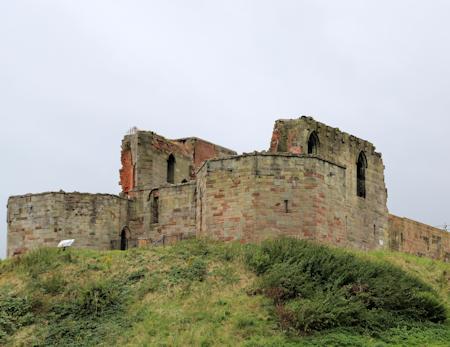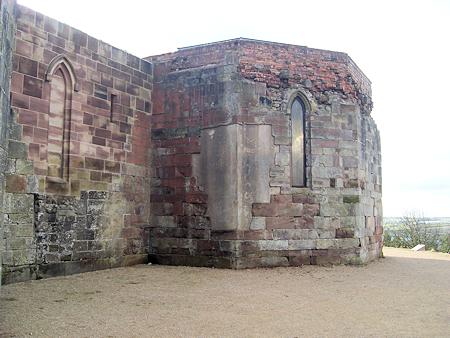
Stafford Castle
Stafford Castle stands in a commanding position on a ridge overlooking the M6 motorway. Originally constructed in the 11th Century it has some of the best surviving Norman earthworks in England. Extensively reconstructed in the 19th Century and again in the 20th, the castle is part of the Stafford Heritage Trail.
The Early Castle
The first castle in Stafford was a wooden motte and bailey which was constructed in 1070. However it was quickly abandoned, for reasons that are now lost to history, and the town's castle was built on its present site.
Robert de Stafford built the castle here on behalf of William the Conqueror. Although it was wooden and most traces of the building have gone, the earthwork banks and ditches from this early work can still be seen. The earthworks extend for 10 acres around the site and the castle backs onto woodland which could have been medieval hunting grounds.
The castle passed down the de Stafford family line and it was Ralph de Stafford, 1st Earl of Stafford who converted the castle to a stone structure in 1347.
Ralph de Stafford had a long and distinguished military career. He participated in the Hundred Years War and in numerous battles against the Scottish.
In 1348 Ralph became the fifth founder member of the Order of the Garter. It was also the year in which he received his license to crenellate at Stafford.
The castle was a rectangular tower house with four octagonal corner towers. A fifth tower was later added to the western wall. The motte was artificially raised and a deep ditch was added to strengthen the defences.
The family reached its zenith in the 15th Century. Humphrey Stafford was created 1st Duke of Buckingham in 1444 and his son, Henry, played a pivotal role in the Wars of the Roses. His rebellion, even though it was swiftly quashed, polarised opinion against King Richard III and brought more followers to Henry of Richmond's (later Henry VII) camp.
Edward Stafford, the 3rd Duke, was a powerful and well-connected nobleman. He also had Plantagenet blood and a distant claim to the throne. Henry VIII was suspicious of him and brought him to trial, accusing him of plotting against the King. He was executed in 1523 and attainted by Act of Parliament. Stafford Castle along with his estate was forfeit to the Crown.
Decline and Restoration
Stafford Castle was eventually returned to the Staffords, but they didn't have their previous wealth or status and the keep was allowed to fall into disrepair.
The English Civil War saw the castle garrisoned by Royalists under Lady Isobel Stafford. She managed to hold on to the castle for about six weeks during May and June 1643 before being persuaded to leave.
The Parliamentarians severely damaged the castle and it was abandoned until the 19th Century.
By 1813 Stafford Castle had come into the ownership of the Jerningham family via marriage. Henry Stafford-Jerningham, 9th Baron Stafford, undertook an extensive reconstruction project on the castle. He used the foundations of the earlier castle to build a rectangular keep with the four octagonal towers.
It is a very early example of Gothic Revival architecture, but due to a lack of funds the reconstruction was never finished. The keep was in a fit enough state to be occupied and it had live-in caretakers until 1949 when part of the structure collapsed, killing a visitor.
In 1962 parts of the castle were demolished by the British Army and the structure was made safe again.
Today Stafford Castle is run by the local authority. They have constructed a visitor centre and heritage trail around the castle. They have also recreated a medieval herb garden and installed signage and information boards around the site.
The visitor centre has displays on the history of the castle and its place in English history along with a programme of changing exhibits and exhibitions. It also incorporates a gift shop and toilets.
Stafford Castle is home to a programme of events throughout the summer months and has a prominent place in the Stafford Festival Shakespeare each year. There are also number of events and programmes in the year for school groups.
Status: Museum / Heritage Site
Owner: Stafford Borough Council
Tel: +44 (0)1785 257 698
Email: heritage@staffordbc.gov.uk
Website: www.staffordbc.gov.uk
Opening Times: April to October Wed-Sun 11am-4pm / November to March Weekends only 11am-4pm


Looking up the ridge to Stafford Castle

Close up of a window on one of the towers